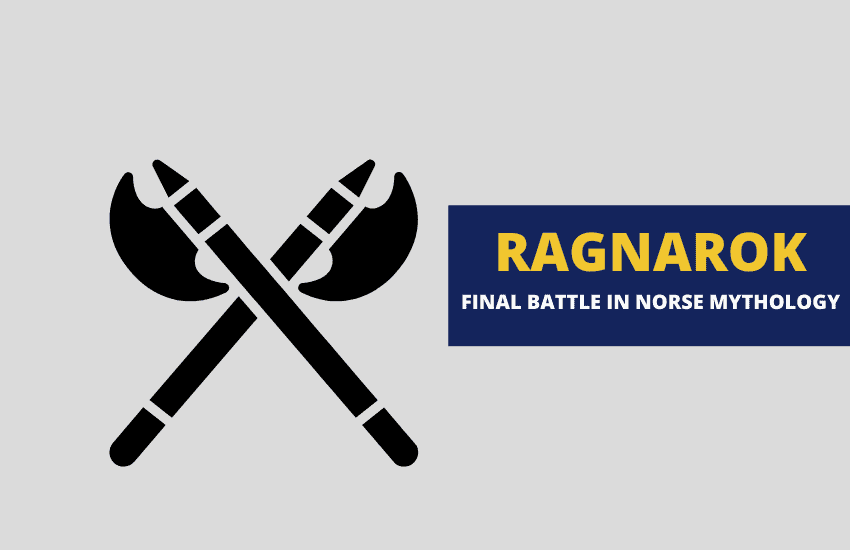
Table of Contents
The famous “End of Days” event in Norse myths, Ragnarok is the culmination of all myths and legends of the Norse people. It’s one of the most unique apocalyptic events in any culture or religion, highilghting the end of the world, and everything in it, including the Norse gods. Ragnarok is a prophecy that has not occurred yet. It’s a highly symbolic event that gives us a clear insight into the worldview of the Norse people.
What is Ragnarok?
The Prose Edda, written by Snorri Sturluson, contains the most comprehensive account of Ragnarok. Ragnarok, or Ragnarök in Old Norse, directly translates to Fate of the Gods. In some literary sources, it’s also called Ragnarøkkr, which means Twilight of the Gods or even Aldar Rök, i.e. Fate of Mankind.
All those names are highly fitting as Ragnarok is the end of the whole world, including the end of the Norse gods. Yes, even the gods don’t get out of this one.
Ragnarok will occur when a series of unfortunate events begin to take place, culminating in a great final battle. This will be between the gods of Asgard together with the fallen Norse heroes in Valhalla fighting against Loki and the forces of chaos, such as giants, jötnar, and various other beasts and monsters.
Despite the gods’ courageous efforts, they are destined to perish, signaling the destruction of the world. Yet, from these ashes arises a renewed world, reborn and cleansed, suggesting a cyclical interpretation of time and existence in Norse belief.
How Does Ragnarok Start?
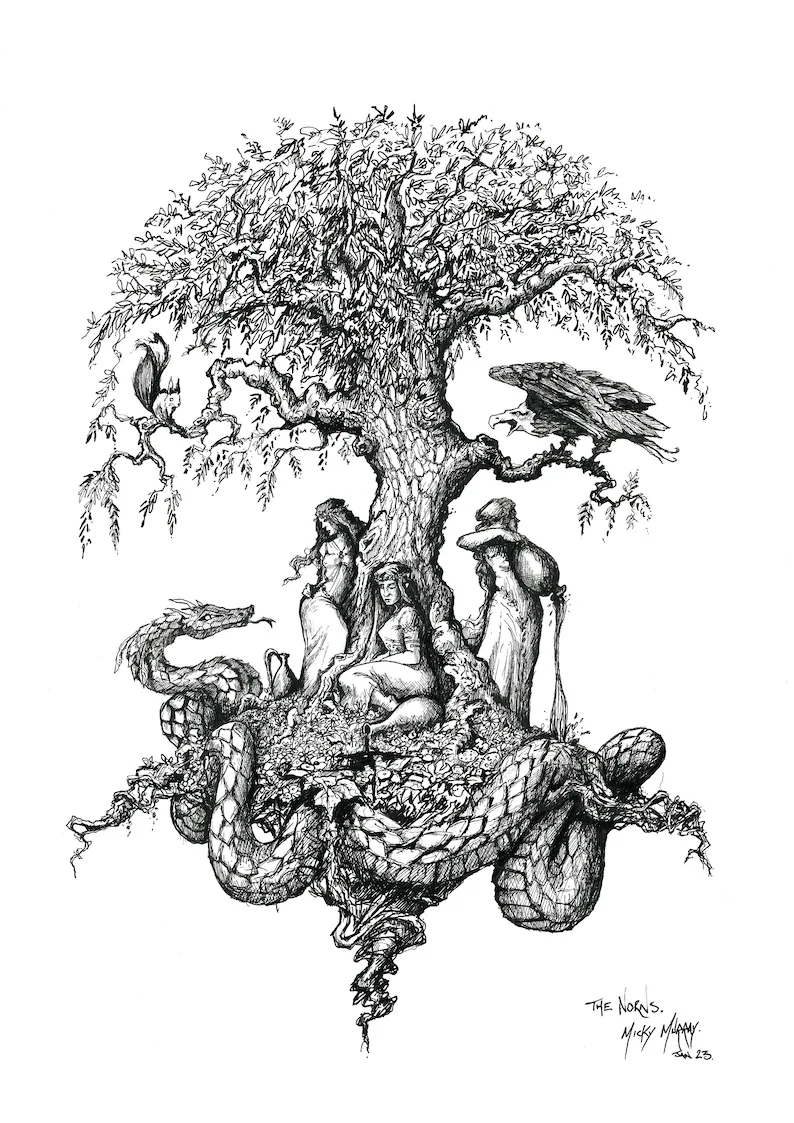
Ragnarok is something that’s fated to happen in Norse mythology. What’s interesting is that this world ending event doesn’t occur because of a powerful deity like Odin. Instead, it’s initiated by the Norns.
In Norse mythology, the Norns are the spinners of destiny, mythical celestial beings. They don’t live on any of the Nine Realms, but instead reside in the Great Tree Yggdrasil together with other mythical beings and monsters. Yggdrasil is the World Tree, a cosmic tree that connects all Nine Realms and the entire Universe. The Norns constantly weave the fates of every human, god, giant, and creature in the universe from there.
Another being connected to Ragnarok that also lives in Yggdrasil is the great dragon Níðhöggr. This giant beast is said to live in the roots of the World Tree, where he constantly gnaws at them, slowly destroying the very foundations of the Universe. It’s unknown why Níðhöggr does this, but he just does. As he continues to chew on the tree’s roots, Ragnarok draws closer and closer.
So, on one unknown day, after Níðhöggr has caused enough damage and when the Norns decide it’s time, they are going to weave a Great Winter into existence. That Great Winter will be the beginning of Ragnarok.
What Exactly Happens During Ragnarok?
Ragnarok is a great event described in several different poems, stories, and tragedies. This is how the events are fated to unfold.
Phase 1: Beginning of Ragnarok
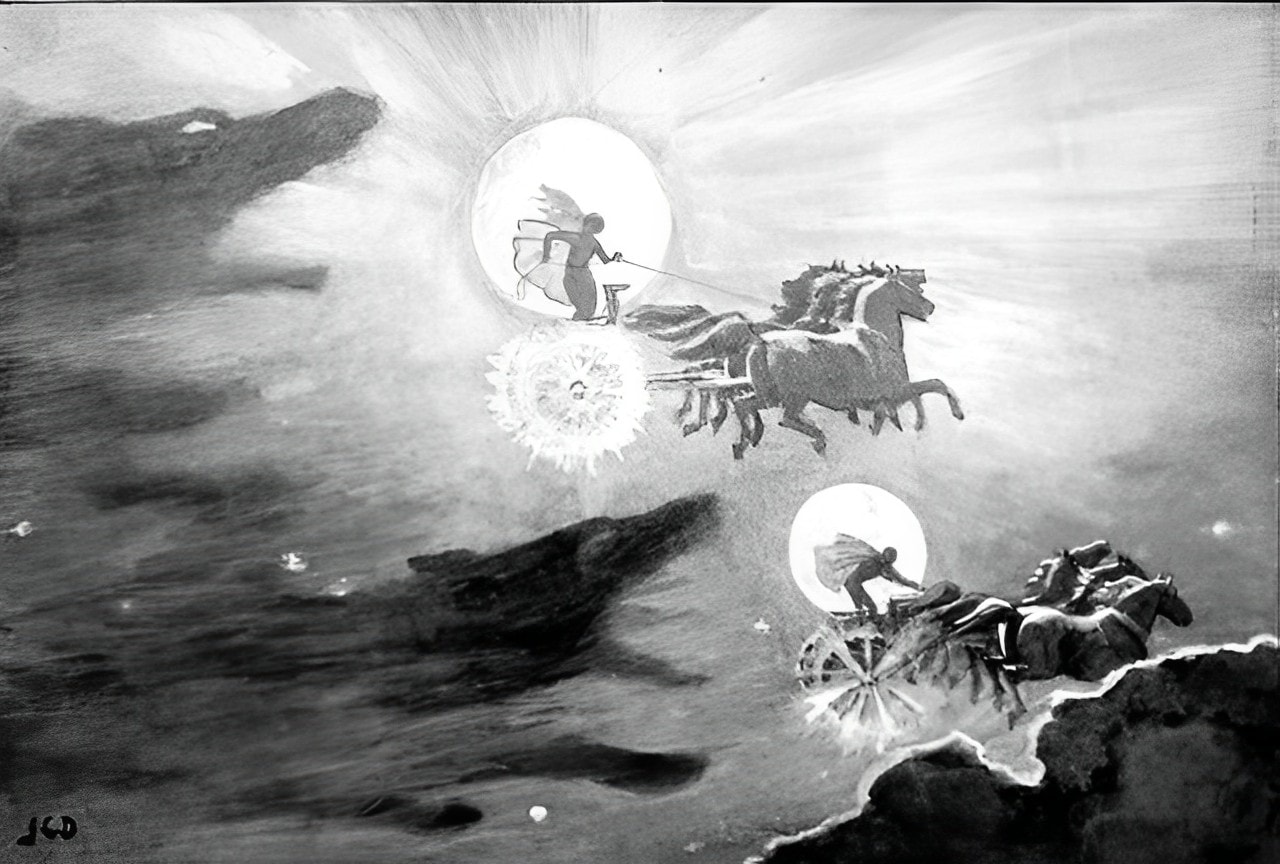
Fimbulwinter: The Great Winter, brought on by the Norns, will cause the world to enter into a terrible stage. Humans will become so desperate that they will lose their morals and struggle against each other simply to survive. They will begin killing each other, turning against their own families.
The Disappearance of the Sun and Moon: Next, during the Great Winter, the two wolves, Skoll and Hati, who’ve been hunting the sun and the moon since the dawn of the world, finally catch and eat them. Right after that, the stars will disappear into the void of the cosmos.
The Shaking of Yggdrasil: The roots of Yggdrasil will finally collapse and the World Tree will start trembling, causing the earth and mountains of all Nine Realms to shake and crumble. This signals the onset of the final battle.
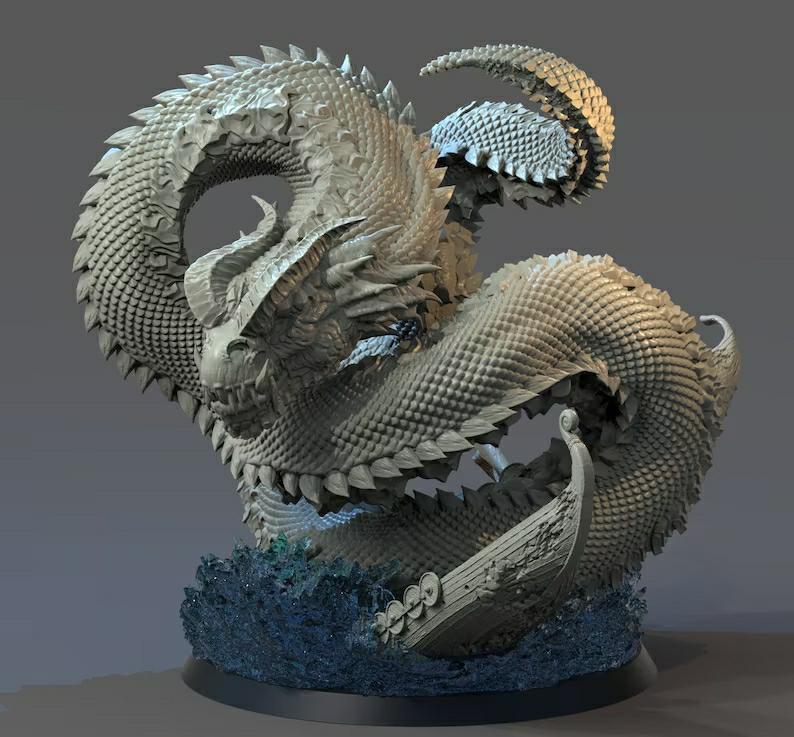
Release of the Monsters: Jörmungandr, one of Loki’s beastly children and the World Serpent that encircles the Earth in the ocean’s waters, would finally let go of its own tail. After that, the giant beast will rise from the oceans and spill water all over the Earth. The giant wolf Fenrir, another of Loki’s cursed offspring, will finally break free of the chains the gods had bound him in and go on the hunt for Odin, who he is destined to kill. Loki will also break free of his own chains with which the gods had bound him after he orchestrates the death of the sun god Baldur.
Arrival of Naglfar: The earthquakes and tsunamis caused by Jörmungandr’s rise will shake the infamous ship Naglfar (Nail Ship) free of its moorings. Made from the toenails and fingernails of the dead, Naglfar will sail freely on the flooded world toward Asgard, the realm of the gods. Naglfar will be boarded by Loki and his horde of ice giants, jötnar, monsters. In some sources, even the souls of the dead who resided in Helheim, the underworld ruled by Loki’s daughter Hel. As Loki sails toward Asgard, Fenrir will run across the Earth, devouring everyone and everything in his path. Meanwhile, Jörmungandr will rage on both land and sea, spilling his venom over the earth, water, and sky.
Phase 2: The Battle of Ragnarok
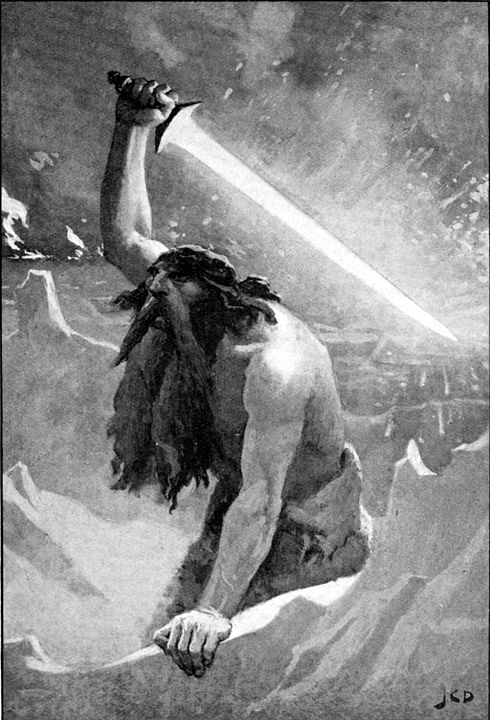
Sutr Joins the Fray: As Fenrir and Jörmungandr rage, the skies will split and the fire giants from Muspelheim will also invade Asgard, led by the jötun Surtr. He will be wielding a fire sword that shines brighter than the by-then-gone sun. He will lead his fire horde across Asgard’s entry point, the Bifrost rainbow bridge.
The Sounding of Gjallarhorn: Loki’s and Surtr’s armies will be spotted by the gods’ watchman, the god Heimdallr, who will sound his horn Gjallarhorn, warning the Asgardian deities about the impending battle. At that point, Odin will recruit the help of the fallen Norse heroes from Valhalla. The goddess Freyja will also recruit her own host of fallen heroes from her celestial Fólkvangr field. Side by side, gods and heroes will prepare to face the forces of chaos.
Fenrir and Odin: As Loki and Surtr assault Asgard, Fenrir will finally catch up to Odin and the two will lock into an epic battle. The giant wolf will eventually fulfill his destiny and take his revenge for being bound by the gods by killing Odin. Odin’s spear, gungnir, will fail him for the first and only time and he will lose the battle. Soon after that, Odin’s son and god of vengeance Vidar will attack the wolf, force its mouth open, and slash the monster’s throat with his sword and kill him.
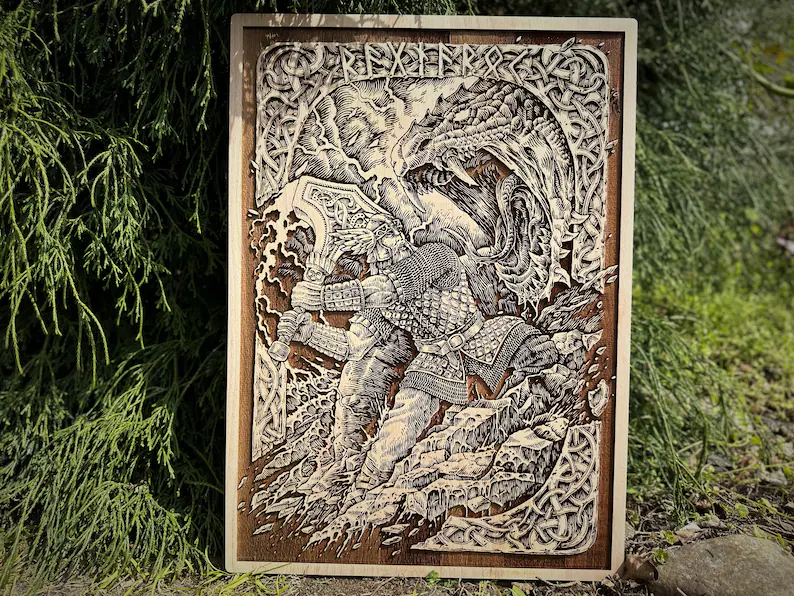
Thor and Jörmungandr: Meanwhile, Odin’s most famous son and god of thunder and strength, Thor will engage in combat with none other than the World Serpent Jörmungandr. This would be the third meeting and the first real fight between the two. After a long and hard battle, Thor will manage to kill the great beast. But Jörmungandr’s venom will course through his veins and Thor will die after taking just nine final steps.
Phase 3: End of the Cosmos
The Gods Perish: Deep into Asgard, Loki and Heimdallr will fight each other and their struggle will end with both gods dead. Tyr, the god of war who helped chain Fenrir, will be attacked by Garm, the hellhound of the goddess Hel, and the two will also slay one another.
Freya and Sutr: Meanwhile, the fire jötun Surtr will lock into combat with the peaceful fertility god (and Freyja’s brother) Freyr. The latter will be armed with nothing more than an antler as he had given away his own magic sword when he decided to marry and settle down. Fighting with just an antler against a giant flaming sword, Freyr will be killed by Surtr. Some sources imply that he will manage to slay the fire giant too. With gods, giants, and monsters slaying each other left and right, the whole world will be engulfed by the flames from Surtr’s sword and the Universe will end.
Which Gods Survive Ragnarok?
Depending on the myth, Ragnarok can have different endings. In many sources, the events of Ragnarok are final and no one survives them. The Universe is tossed back into empty nothingness, so that a new world can emerge from it and a new cycle can begin. Some scholars argue that this is the older, original version.
In other sources, however, several Asgardian gods survive the carnage even though they still lose the battle. These are the two sons of Thor, Móði and Magni, carrying their father’s hammer Mjolnir, and two of Odin’s sons, Vidar and Vali, both gods of vengeance.
In some sources, two more of Odin’s sons also “survive”. The twin gods Höðr and Baldr, who die tragically before the start of Ragnarok, are released from Helheim. They join their surviving siblings on the field of Iðavöllr, which grew from Asgard’s ashes once the seas and oceans retreated from the land. In this version, the few survivors discuss the events of Ragnarok and observe the regrowing fields.
Regardless of whether any or no gods survived Ragnarok, the Final Battle is still viewed as the cataclysmic end of the world and the beginning of a new cycle.
In some versions, it is said that a few human beings will survive Ragnarok. Lif and Lifthrasir, a man and a woman, hide in Yggdrasil during the cataclysm and emerge afterward to repopulate the new world.
What’s the Point of Rangarok?
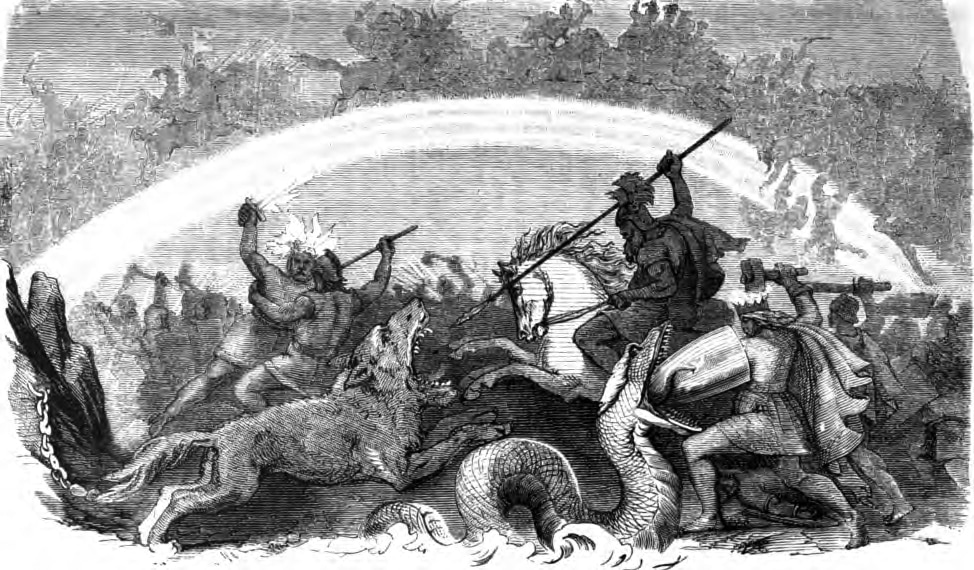
So, what’s the point of all that? Why did the Norse and Germanic people construct a religion that ends with such tragedy when most other religions end more happily for at least some people?
Most scholars theorize that Ragnarok symbolizes the somewhat nihilistic but accepting mentality of the Norse people. Unlike most other cultures who used religion to comfort themselves and dream for a better future, the Norse viewed life and the world as doomed, but they also accepted that worldview and found invigoration and hope in it.
This resulted in a rather unique mentality. The Norse and Germanic people strove to do what they perceived as “right” regardless of whether they had hope for success or not. For example, when a Nordic or Germanic warrior engaged with an enemy on the field of battle, they didn’t focus on if the battle was lost or not – they fought because they viewed that as “right” and that was reason enough. Similarly, when they dreamed of going to Valhalla and fighting in Ragnarok, they didn’t care that it would be a losing battle – it was enough to know that it would be a “righteous” battle.
While we might view this worldview as gloomy and lacking hope, it offered inspiration and strength to the Norse. Just as the mighty gods would face their final battle with strength, bravery and dignity, knowing that they were fated to be defeated, so too would Norse individuals face the challenges in their lives. Death and decay is a part of life. Rather than allowing it to stifle us, it should encourage us to be courageous, noble and honorable in life.
Symbolism of Ragnarok
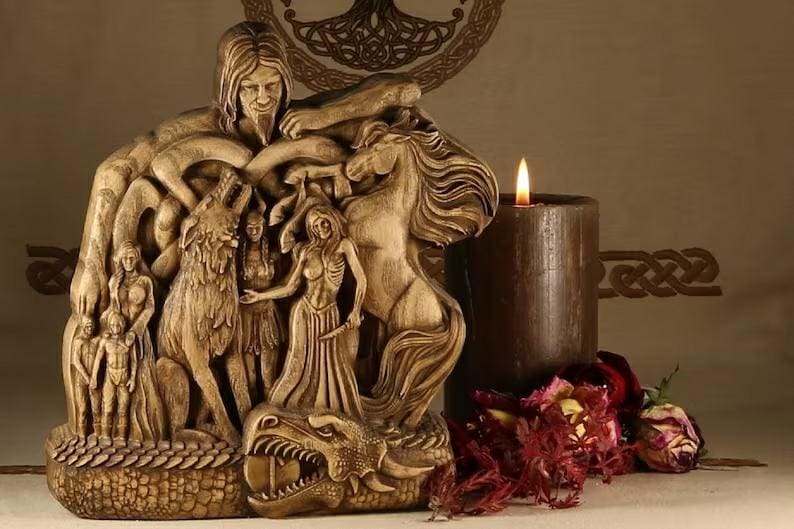
Ragnarok is a complex myth full of symbolism and meaning that reflects the worldview and beliefs of the Norse people. Here are a few ways that scholars have interpreted the symbolism of Ragnarok:
- Cyclical Nature of Time: The Norse believed in a cyclical concept of time, rather than a linear one. The world is born, ages, dies in Ragnarok, and is reborn again. This reflects the cyclical patterns seen in nature: the changing seasons, the cycle of day and night, life and death, and so on.
- Struggle and Heroism: Ragnarok symbolizes the eternal struggle between order (gods) and chaos (giants and monsters). This is something we see in many subsequent religions. Even though the gods know they are doomed, they fight on regardless, embodying the Norse ideals of courage, honor, and heroism in the face of inevitable defeat.
- Mortality and Impermanence: Even the gods in Norse mythology are not immune to death. Ragnarok symbolizes the impermanence of all things. No matter how mighty or divine, everything comes to an end, underscoring the Norse understanding of mortality and the fleeting nature of life.
- Renewal and Rebirth: Despite its destructive nature, Ragnarok is not just an end, but also a new beginning. It serves as a cleansing fire that purges the old world to make way for the new, symbolizing themes of renewal, rebirth, and hope amidst despair.
- Fate and Destiny: The gods are aware of their impending doom, but they can’t prevent it. This underlines the Norse belief in predetermined fate or destiny (known as ‘wyrd‘), showing that certain outcomes are inevitable and must be faced with courage and dignity.
Importance of Ragnarok in Modern Culture
Ragnarok is such a unique and famous End of Days event that it remained a part of Europe’s mythos even after the Christianization of the continent. The great battle was depicted in numerous paintings, sculptures, poems, and operas, as well as literary and cinematic pieces.
In recent times, variations of Ragnarok were shown in the 2017 MCU movie Thor: Ragnarok, the God of War video game series, and even the TV series Ragnarok.
Wrapping Up
Ragnarok is an apocalyptic event in Norse mythology, with arguably no justice towards gods and mortals. It simply unfolds as it was meant to, with all who take part in it knowing how it will end. Yet each carries out their role with dignity, bravery and courage, fighting until the very end, essentially telling us, ‘the world’s going to end and we’re all going to die, but while we’re living, let’s live out our roles to the fullest’.
Related Articles
Hel Goddess – The Ruler of the Dead in Norse Mythology
15 Unique Creatures of Norse Mythology
The Nine Norse Realms – And Their Significance in Norse Mythology
Ginnungagap – Cosmic Void of Norse Mythology








